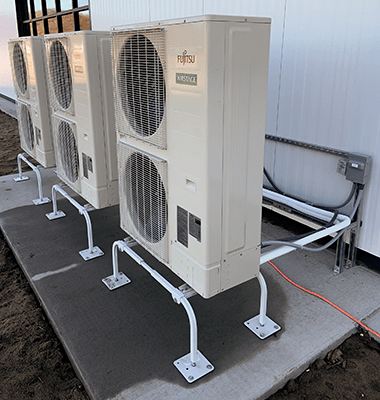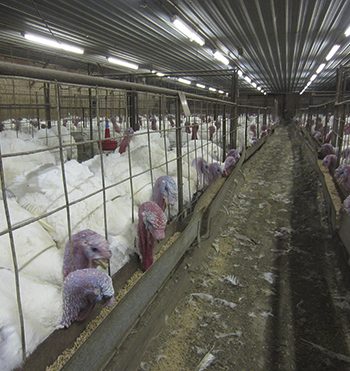“The best AC is actually a heat pump. It’s obvious that heat pumps provide heat—it’s right in the name—but many people don’t realize that they are also excellent air conditioners. The fact that they save you money on your energy bills is just icing on the cake.” — Rewiring America
By promoting the widespread adoption of heat pumps and prioritizing building efficiency, societies can significantly cut fossil fuel dependency while enhancing resilience and sustainability.
Heat pumps are a deceptively simple, highly efficient technology that can both heat and cool spaces without the usual environmental baggage. It doesn’t generate heat by burning fuel; it moves heat from one place to another. Imagine trying to warm your house with the same energy it takes to power a hair dryer—that’s the level of efficiency we’re talking about. The magic isn’t magic; it’s physics.
In the winter, heat pumps extract warmth from the outside air (yes, even when it’s cold) and transfer it indoors. In the summer, they reverse the process, pulling heat from inside your home and releasing it outside. This is the same basic principle that makes your refrigerator work, except instead of keeping your leftovers chilled, it keeps your entire house cozy—or cool, depending on the season.
Why does this matter? Because heating and cooling buildings account for nearly 40% of global energy consumption and a significant share of carbon emissions. Traditional systems rely heavily on fossil fuels—natural gas, oil, coal—while heat pumps run on electricity. Paired with renewable energy, they become a zero-emissions solution for climate control. A well-installed heat pump can deliver up to four times more energy in heating or cooling than it consumes in electricity.
Countries that have embraced heat pumps are reaping the benefits. In Norway, where winters are frosty, heat pumps are in over 60% of households. Heat pumps work, even in cold climates, and they save money. In Japan, after the 2011 Fukushima disaster, heat pump adoption surged as the country sought energy efficiency to reduce reliance on nuclear power and imported fossil fuels.
The European Union has made heat pumps central to its energy strategy, with ambitious targets for deployment as part of the Green Deal. This isn’t just about climate goals; it’s about energy security. The less dependent a country is on imported fossil fuels, the more resilient it is to geopolitical shocks, price volatility, and the whims of petrostate autocrats.
In the U.S., heat pumps are gaining traction, especially in regions with extreme weather. The Inflation Reduction Act includes incentives for heat pump installations, making them more affordable for homeowners and businesses. Studies from the Rocky Mountain Institute show that switching from gas heating to heat pumps can significantly reduce household emissions while cutting energy bills.
Energy efficiency is the unsung hero of climate action—boring to talk about, perhaps, but incredibly powerful. It’s about using less energy to achieve the same—or better—results. Think of it as the art of getting more for less. Efficient buildings stay warmer in winter, cooler in summer, and cheaper to run year-round.
The tools of energy efficiency are varied but effective: better insulation, high-performance windows, LED lighting, smart thermostats, and advanced ventilation systems. Passive house design, pioneered in Germany, creates buildings so efficient they require little to no active heating or cooling. Imagine living in a home where the warmth from your appliances, body heat, and sunlight is enough to keep things comfortable, even in the depths of winter.
Retrofitting existing buildings is a massive opportunity. According to the International Energy Agency (IEA), improving the energy efficiency of buildings could reduce global emissions by up to 6 gigatons annually by 2050. That’s like taking 1.3 billion cars off the road. And it’s often cheaper than building power plants to meet unnecessary energy demand.
High energy costs disproportionately affect low-income households, often stuck in drafty, poorly insulated homes. Energy efficiency upgrades reduce bills, improve health by eliminating mold and cold-related illnesses, and create local jobs in construction, retrofitting, and energy auditing.
In the U.S., energy efficiency employs over 2 million people—more than fossil fuel extraction and power generation combined. These aren’t abstract “green jobs” in some distant future; they’re real, here-and-now opportunities in industries that can’t be outsourced because you can’t install insulation or upgrade HVAC systems from a distant call center.
There’s also a resilience factor. Energy-efficient buildings are better prepared for extreme weather, requiring less energy to maintain livable conditions during power outages or fuel shortages. When the grid falters, efficient homes and businesses create less strain on emergency systems and save lives.
While installation can be expensive, the long-term savings on energy bills often offset the initial investment. Incentive programs, rebates, and financing options are key to making these technologies accessible to everyone. For example, the U.K.’s Green Homes Grant and Germany’s federal subsidies for heat pumps have accelerated adoption rates.
Policy is a powerful driver. Building codes can mandate efficiency standards, while performance-based regulations ensure that new constructions meet sustainability targets. Governments can set efficiency goals for public buildings, creating demand for clean technologies and setting examples for private sectors to follow.
International collaboration helps, too. Knowledge-sharing platforms like the Global Alliance for Buildings and Construction facilitate the spread of best practices, technological innovations, and financing models. Countries with strong energy efficiency track records—like Denmark and Sweden—offer lessons that can be adapted globally.
Technological innovation is accelerating. Next-generation heat pumps can operate efficiently in extreme climates, including subarctic regions. Smart home technologies optimize energy use, adjusting lighting, heating, and cooling automatically based on occupancy and weather conditions. Even windows are getting smarter, with dynamic glazing that adjusts tint to control heat gain and loss.
Electrification and efficiency go hand in hand. Heat pumps work best in well-insulated buildings, and efficient buildings make renewable energy go further by reducing overall demand. It’s a synergy that multiplies the benefits, making decarbonization faster, cheaper, and more effective.
Cultural shifts are part of the equation. For decades, bigger and more powerful appliances were seen as status symbols. Now, efficiency is becoming the new marker of progress. Energy audits are as important as home inspections when buying property. Smart thermostats are as common as coffee makers. The language of sustainability is woven into the fabric of modern life.
Climate justice intersects with energy efficiency. Indigenous communities, marginalized neighborhoods, and developing countries often bear the brunt of climate impacts while contributing the least to the problem. Efficiency programs targeted at these communities can address historical inequities, reduce energy poverty, and build climate resilience from the ground up.
In the developing world, efficient technologies can leapfrog traditional infrastructure. Off-grid solar paired with efficient appliances provides reliable energy where centralized grids are unreliable or nonexistent. In rural Africa, energy-efficient cookstoves reduce deforestation, improve health, and empower women who would otherwise spend hours gathering fuel.
Financing mechanisms are evolving. Green banks, energy service companies (ESCOs), and pay-as-you-save models make efficiency upgrades accessible without heavy upfront costs. The return on investment isn’t just financial; it’s environmental, social, and health-related.
Heat pumps and energy efficiency represent more than technological fixes. They’re symbols of a smarter, more sustainable relationship with energy—a shift from wasteful consumption to thoughtful stewardship. They show that comfort and sustainability aren’t opposites; they’re partners in creating a future that works for people and the planet.
Therefore, under Folklaw:
Heat pumps and energy efficiency measures shall be prioritized to reduce energy consumption, lower emissions, and promote sustainable living. Governments will incentivize the adoption of heat pumps, retrofit programs for existing buildings, and the construction of highly efficient new structures.
Building codes will enforce stringent efficiency standards, and subsidies will support low-income households in accessing clean heating and cooling technologies. Workforce development programs will train professionals in energy auditing, retrofitting, and efficient system installation.
Public awareness campaigns will promote energy literacy, while international cooperation will advance best practices and technological innovation in energy efficiency.






Discussions
There are no discussions yet.